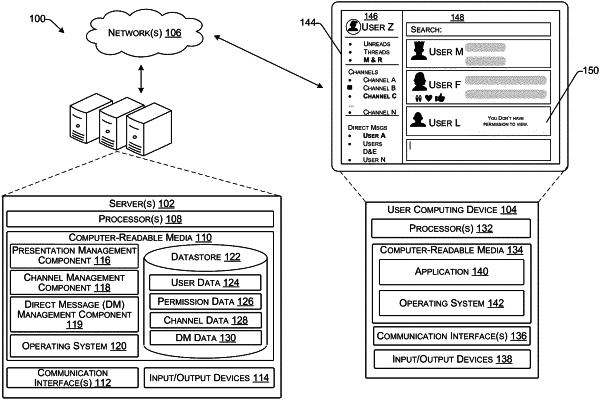| CPC H04L 51/214 (2022.05) [H04L 51/18 (2013.01); H04L 67/535 (2022.05); H04W 4/12 (2013.01)] | 20 Claims |

|
1. A method, implemented at least in part by one or more computing devices of a communication platform, the method comprising:
receiving, from a first user associated with the communication platform, a first message for one or more users associated with a virtual space;
associating a second user with the first message;
determining that the second user is not a member of the virtual space;
generating, based at least in part on the first message and interaction data, a characteristic associated with a user profile of the second user;
determining, based at least in part on the characteristic, a presentation characteristic of the first message;
causing, via a user interface of the communication platform and based at least in part on the presentation characteristic, the first message to be displayed to the second user;
receiving, from a third user of the one or more users, a second message to be posted to the virtual space;
determining, in response to the second user not being a member of the virtual space, that the second user is unable to view the second message;
determining that the second message is associated with the first message;
determining, despite the second user not being the member of the virtual space and based at least in part on the second message being associated with the first message and the second user being associated with the first message, that the second user is associated with the second message; and
causing, based at least in part on the second user being associated with the second message, the second message to be displayed via the user interface to the second user.
|